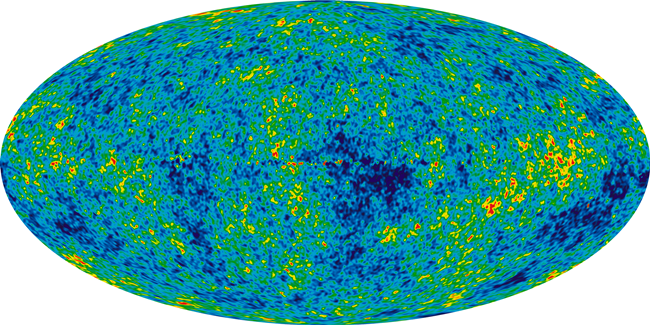
Having just posted an article that described the universe in terms of holographic principles – a 3-D projection on a two dimensional surface, it’s timely to put the theory in context, of other theories of course. There’s a theory that posits that the universe is a bubble wrought from the collision of high-dimensional branes (membrane that is). There’s a theory that suggests that our universe is one of many in a soup of multi-verses. Other theories suggest that the universe is made up of 9, 10 or 11 dimensions.
There’s another theory that the universe is flat, and that’s where Davide Castelvecchi (mathematician, science editor at Scientific American and blogger) over at Degrees of Freedom describes the current thinking.
[div class=attrib]What Do You Mean, The Universe Is Flat? (Part I), from Degrees of Freedom:[end-div]
In the last decade—you may have read this news countless times—cosmologists have found what they say is rather convincing evidence that the universe (meaning 3-D space) is flat, or at least very close to being flat.
The exact meaning of flat, versus curved, space deserves a post of its own, and that is what Part II of this series will be about. For the time being, it is convenient to just visualize a plane as our archetype of flat object, and the surface of the Earth as our archetype of a curved one. Both are two-dimensional, but as I will describe in the next installment, flatness and curviness make sense in any number of dimensions.
What I do want to talk about here is what it is that is supposed to be flat.
When cosmologists say that the universe is flat they are referring to space—the nowverse and its parallel siblings of time past. Spacetime is not flat. It can’t be: Einstein’s general theory of relativity says that matter and energy curve spacetime, and there are enough matter and energy lying around to provide for curvature. Besides, if spacetime were flat I wouldn’t be sitting here because there would be no gravity to keep me on the chair. To put it succintly: space can be flat even if spacetime isn’t.
Moreover, when they talk about the flatness of space cosmologists are referring to the large-scale appearance of the universe. When you “zoom in” and look at something of less-than-cosmic scale, such as the solar system, space—not just spacetime—is definitely not flat. Remarkable fresh evidence for this fact was obtained recently by the longest-running experiment in NASA history, Gravity Probe B, which took a direct measurement of the curvature of space around Earth. (And the most extreme case of non-flatness of space is thought to occur inside the event horizon of a black hole, but that’s another story.)
On a cosmic scale, the curvature created in space by the countless stars, black holes, dust clouds, galaxies, and so on constitutes just a bunch of little bumps on a space that is, overall, boringly flat.
Thus the seeming contradiction:
Matter curves spacetime. The universe is flat
is easily explained, too: spacetime is curved, and so is space; but on a large scale, space is overall flat.
[div class=attrib]More from theSource here.[end-div]
[div class=attrib]Image of Cosmic Microwave Background temperature fluctuations from the 7-year Wilkinson Microwave Anisotropy Probe data seen over the full sky. Courtesy of NASA.[end-div]
